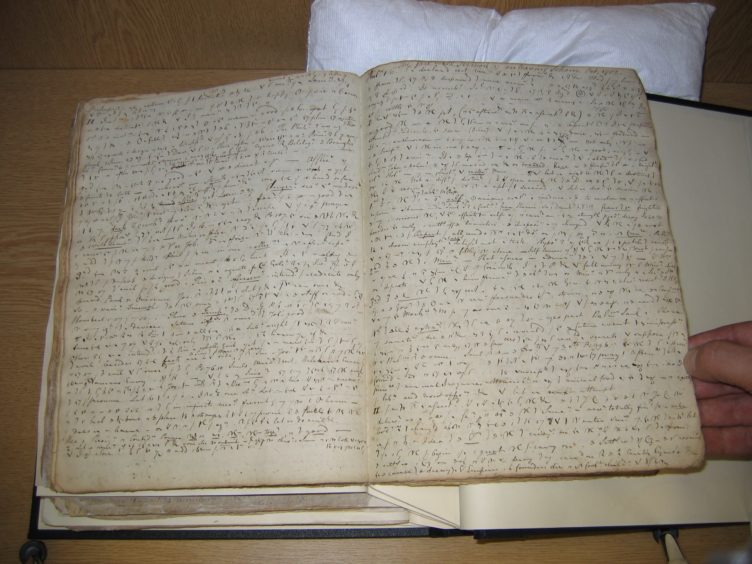A young St Andrews University student has cracked coded documents which have baffled boffins for centuries.
Third year divinity undergraduate Jonny Woods has become the first person in the world to read some of the hundreds of pages of shorthand notes left by famous Baptist leader Andrew Fuller.
Dr Steve Holmes, head of the university’s School of Divinity, described the achievement as “astonishing”, adding: “It’s one of those moments you live for as an academic.”
Fuller, who died in 1815, became a leader of the British Baptist denomination and, despite minimal schooling, published a hugely influential text, The Gospel Worthy of All Acceptation, which changed the history of the Baptists.
Such was his international standing, he was later offered honorary doctorates by both Yale and the College of New Jersey, now Princeton, which he modestly declined.
Hundreds of pages of his sermons are held in the archive of Bristol Baptist College. On examining them, Dr Holmes found one headed in longhand “Confessions of Faith, Oct 7 1783”.
Knowing this was the date of Fuller’s induction into the pastorate of a church in Kettering and that he would have been required to give a confession of faith as part of that service, Dr Holmes wondered if a copy of the confession printed in a biography might help him crack the code.
On discovering that the two texts were the same, Dr Holmes recruited Jonny through the university’s undergraduate research assistant scheme to help.
After just a few weeks Jonny was able to translate the shorthand, using the longhand version as a kind of Rosetta stone, allowing him to read two of the most historically significant sermons from the collection.
Jonny said: “It is such an honour to be the first person to read Andrew Fuller’s sermons and to allow people to get an insight into this incredible man and the amazing stories he has to share.
“I’m excited to continue working on the vast collection of work that he has left to us, in the hope that we can understand more about his thinking and how this developed throughout his ministry.”
Dr Holmes added: “When Jonny told me he could read these documents it was an astonishing moment.
“Andrew Fuller stands as the figurehead, the ‘patron saint’ almost, of the church tradition of which I am a part. To be reading words of his that no-one had read since he preached them in 1782 – it’s one of those moments you live for as an academic.”
It is hoped that Jonny’s breakthrough in understanding the documents will offer insight into Fuller’s meteoric rise within the Baptist denomination, by revealing the early development of his thought.
The translations of these two sermons are now with the Baptist Quarterly, the leading academic journal for Baptist studies, under consideration for publication, while Dr Holmes is continuing to edit Fuller’s wider collection of sermons for a major new critical edition of his works.






